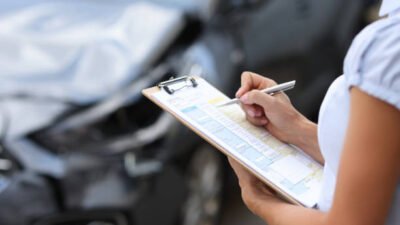Getting into a car accident is a stressful experience, especially when you’re unsure what to do afterward. One of the most important steps following a car crash is the filing of an accurate and detailed accident report.
Located on the U.S.-Mexico border, Laredo is the largest inland port in the country and a major hub for international trade. With a strong bicultural identity and deep historical roots, it plays a vital role in both Texas and national commerce.
In a place like Laredo, where busy roads and cross-border traffic often lead to collisions, understanding what needs to be in your accident report can make all the difference in how your case plays out. This report can be critical if you plan to file an insurance claim or work with a car accident lawyer in Laredo, TX, to recover damages.
Let’s go over the essential information you should always include:
1. Basic Identification Details
Law enforcement typically starts by gathering and recording the full names, addresses, phone numbers, and driver’s license numbers of all parties involved in the accident. This includes drivers, passengers, and any pedestrians who may have witnessed the crash. They will also make a note of the make, model, and license plate numbers of all vehicles involved.
2. Date, Time, and Exact Location of the Crash
Next, the exact date and time of the accident is recorded. Specific details about where the crash occurred, like the nearest intersection, street names, and any landmarks nearby are noted down. In cities like Laredo, where traffic conditions can vary greatly depending on the area, the location can provide important context for how the accident occurred.
3. A Clear Description of the Incident
The report typically includes a detailed narrative of how the accident happened. The direction each vehicle was traveling, the events leading up to the crash, and how the vehicles collided are recorded. Sometimes, a law enforcement officer may draw a rough diagram of the accident scene showing where each car was before, during, and after the impact.
This description should be based on facts, not assumptions. A car accident attorney will often rely on these details to understand liability and argue your side effectively.
4. Road and Weather Conditions
The weather at the time of the crash is described — was it raining, foggy, or sunny? The road conditions, such as whether the road was wet, dry, icy, or under construction are also mentioned. These factors can influence how fault is determined and can be critical when explaining how the accident unfolded.
5. Injuries and Property Damage
Any visible injuries suffered by drivers, passengers, or pedestrians are made a note of. Even if the injuries seem minor, they should still be recorded. Any damage to the vehicles are included as well and officers may take pictures of the scene. In Laredo, some roads have higher traffic volumes, which can lead to more serious impacts and more extensive damage.
6. Police Officer Information
Details of the officer who responded to the accident, like the name and badge number are recorded in the report. Ask how and when you can obtain a copy of the official report, as this may be required by your insurance company or your attorney.
7. Witness Statements
If there were any witnesses to the crash, their contact information and a brief statement are also obtained. Witnesses can provide unbiased accounts that support your version of events, which can be extremely helpful if your claim is disputed.
Final Thoughts
Accident reports aren’t just about paperwork, they provide a way to protect your rights. Whether you’re dealing with an insurance company or working with a car accident lawyer in Laredo, TX, having accurate and thorough information can help you get the compensation you deserve.



